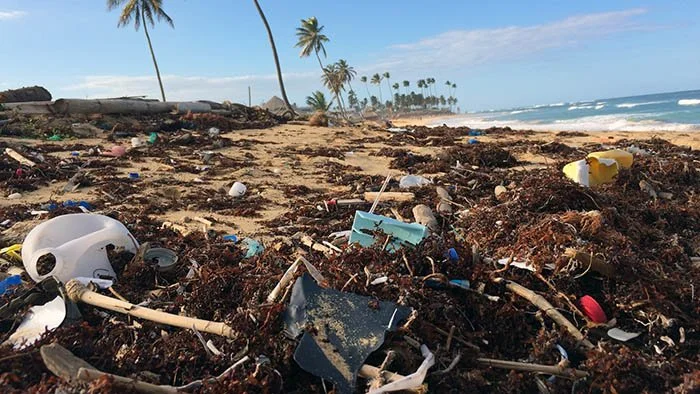Uncovering the History of Earth Day: A Journey from 1970 to Today
Earth Day 2023 is fast approaching. Unlike holidays tied to a lunar calendar or a specific day of the week, Earth Day is always April 22 and will fall on a Saturday this year.
Have you ever wondered about the origins and history of this relatively new holiday? Read on to learn about Earth Day through the years.
What Is Earth Day and Why Do We Celebrate It?
As mentioned above, Earth Day is a holiday celebrated every year on April 22. This date was chosen to begin the modern environmental movement in 1970.
The holiday is a day to remember the value of environmental, social, and corporate governance and stewardship over the environment. The official website, earthday.org, creates a theme each year, along with a series of events, challenges, and celebrations for participants worldwide.
This year, the theme for the day is “Invest in Our Planet” with the call to action “act (boldly), innovate (broadly), and implement (equitably).” The tagline is “everyone accounted for, and everyone accountable,” with the aim to involve businesses, governments, and citizens.
While Earth Day is designed to be for everyone, it contains a particularly powerful message for teachers and students. It gives educators a set point to discuss the future of our planet and the efforts needed to preserve the environment.
Origins of Earth Day
Historical Context
Not so long ago, there was no Environmental Protection Agency (EPA), and legislation like the Clean Air Act or the Clean Water Act was a distant dream. There were no regulations on the amount of pollutants industries could put out into the environment, and many took clear advantage of this lack of oversight. It was clear to those paying attention that this was not sustainable.
The Environmental Movement in the 1960s
The ’60s may be remembered today as a time devoted to peace and free love, but they were a political powder keg. Student demonstrators took on Vietnam, racial equality, and many other issues, including the environment.
In 1962, the book Silent Spring by Rachel Carson decried the use of pesticides like DDT and the harm they were doing to the environment. The hippie counterculture took notice. Industrial waste, oil spills, and other pollutants became a cause to fight, and change began to happen. The first Clean Air Act soon followed in 1967. Next came the first list of endangered species featuring the bald eagle.
Key Environmental Events Leading Up to Earth Day
By the end of the decade, an oil well spill topping more than 200,000 gallons of oil poured into the Pacific Ocean. The Ohio River actually burned due to the high concentrations of oil and chemicals being dumped into it. The country (and the world) began to take notice. The former governor of Wisconsin, Democrat Gaylord Nelson, took up the cause.
Senator Gaylord Nelson and Earth Day's creation
Senator Gaylord Nelson
Nelson’s Environmental Vision
Gaylord Nelson was a politician with a passion. He spoke out against the Vietnam War. He backed the civil rights movement. He fought against poverty, challenging the nation to provide opportunities for the disadvantaged, and he was an ardent environmentalist.
As early as 1965, Nelson was quoted as saying things like, “We are discovering that man cannot live or act apart from his environment.” He would later go on to state, “Our goal is not just an environment of clean air and water and scenic beauty. The objective is an environment of decency, quality, and mutual respect for all other human beings and all living creatures.”
The Idea for a National Environmental Teach-in
In August 1969, then-Sen. Nelson visited the site of the tragic oil spill in San Diego. He spoke at a California conference focused on water and encountered a concept that would shape the future: the “teach-ins” that had been adopted and then abandoned by anti-war protestors.
By September, Sen. Nelson had a concrete plan for a national teach-in to alert the youth of America to the damage being done to the environment. The first Earth Day was born under the moniker Environmental Teach-In in a bipartisan partnership with Congressman Pete McCloskey.
The First Earth Day
On April 22, 1970, Nelson’s team of volunteers and grassroots participants across the country took part in what would soon be known as “Earth Day.”
A group numbering 250,000 marched through the streets of New York City to bring awareness to the environmental cause.
Miami supporters mocked the Orange Bowl Parade with a “Dead Orange Parade” that featured imagery and messages designed to bring attention to the damages caused by pollution.
More than 20 million people participated in demonstrations, educational activities, and other events centered around environmental protection.
By December, congress had authorized the creation of a new agency aimed at protecting the environment: the EPA.
The Evolution of Earth Day
Expanding the Movement
International Involvement
It’s no exaggeration to say that the very first Earth Day was a hit. The next year, it became a global celebration, with the United Nations recognizing the event, though they suggested it should be celebrated on the vernal equinox — the first day of spring.
By 1990, Earth Day was a global phenomenon. Today, more than 190 countries participate, with some celebrating on the equinox and others (like the U.S.) celebrating on April 22.
EarthDay.org and Its Mission
Today, the website earthday.org is the internet hub for Earth Day activities worldwide. The site’s stated mission is to “diversify, educate and activate the environmental movement worldwide,” and it calls itself “the world’s largest recruiter to the environmental movement.”
Major Achievements and Milestones
Trash washed ashore in Punta Cana, Dominican Republic
It’s undeniable that the Earth Day movement has had a major impact on our world. We’ve made significant progress since that first hopeful spark in 1970.
Examples of Environmental Legislation
One significant way that Earth Day has impacted the country (and the world) is by inspiring legislation to benefit the environment. Here are a few examples:
Establishment of the U.S. Environmental Protection Agency (1970)
The Clean Air Act (1970)
The Clean Water Act (1972)
The Endangered Species Act (1973)
The Toxic Substances Control Act (1976)
Upon viewing this list, you may be tempted to think that all of the legislation happened in the 1970s. All of these acts are regularly updated with new regulations and protections, so the work continues through the present day.
Shifts in Public Opinion and Awareness
Earth Day and its education and awareness initiatives have spurred other less measurable changes. Today, most Americans participate in everyday conservation efforts that would have been unthinkable back in the ’60s, and much of these can be directly attributed to Earth Day efforts. Some public changes include:
Climate literacy
Sustainable fashion
Sustainable farming practices
Reduce, reuse, recycle initiatives
Environmental cleanups
A shift away from single-use plastics
Beyond this, many private initiatives and businesses are built around environmental sustainability and protection.
Vertical Farming and Hydroponics: Innovative Solutions for a Sustainable Future
Eden Green’s Vertical Farming Greenhouse
One place where environmentalism is making a big difference is in the agricultural industry. Farms around the world are moving toward more sustainable practices, aiming to reduce climate impacts and produce food without harming the environment. Vertical farming and hydroponic growing are excellent ways to manage this.
Role of Vertical Farming and Hydroponics in Environmental Protection
Vertical farming is a farming method where plants are grown on top of each other, stacked in trays or towers. Hydroponics is the practice of growing plants with their roots suspended directly in water rather than soil. These practices, when used together, can create a sustainable way to grow healthy leafy greens and other plants with minimal environmental impacts.
Hydroponic vertical greenhouses from Eden Green Technologies are a sustainable option for growing vegetables at a commercial scale. The benefits of hydroponics include the following:
No soil degradation
No polluted runoff
No need for toxic pesticides or harmful chemical fertilizers
Less water used
Less land use for agriculture
Far less food waste
Fewer food miles as farms can be located close to the people they feed
The Ongoing Importance of Earth Day
Our world still needs Earth Day and the education and awareness it provides. We are facing many challenges that will impact our world far into the future. Earth Day provides opportunities for public discourse and education around these issues. It’s an annual reminder of the importance of environmental stewardship that continues to impact our world.
The Role of Innovative Solutions like Vertical Farming and Hydroponics in Shaping a Sustainable Future
Without significant changes to how our food was grown and produced in years past, we will soon have a global food crisis. Vertical farming and hydroponics are one solution among many that are being employed to help prevent this crisis.
Contact our team today if your grocery brand wants to be part of this solution. Our innovative and safe hydroponic system offers local produce at affordable prices, perfect for white-label and custom greenhouse-grown products.






